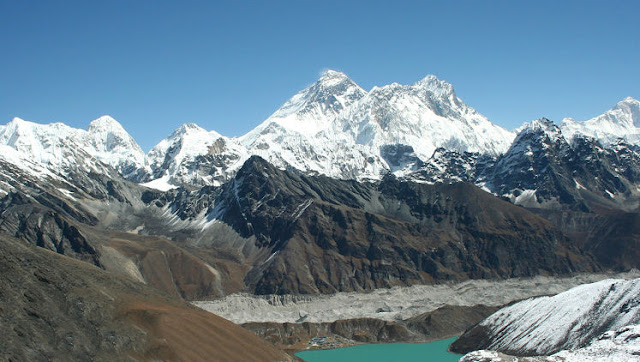The Everest Base Camp Trek is
one of the most popular treks in the world, and with good reason. The
views you’ll see are unmatched by any other trek, with some of the
highest peaks in the world including Lhotse, Makalu, Cho Oyu, and of
course Mt Everest itself towering over you. The trek also passes by
many villages along the way where you can interact with locals,
making it more than just a sightseeing trip. Our Everest
Base Camp Trek
page has everything you need to know about this fantastic trek
through Nepal’s Himalayas!
What
is a Base Camp Trek?
A
base camp trek is an adventurous journey to one of some treks in
Nepal or Tibet. It is a great way to enter into and experience a
different culture and countryside. A base camp trek is relatively
easy as it is shorter than other treks like Annapurna Circuit, but it
still provides plenty of opportunities to test your endurance while
you enjoy spectacular views and terrain. The trek also allows you
some close contact with local people as you walk through their
villages and fields on your way up to mountaineering’s famous
Everest Base Camp. From there, you will be able to view most if not
all eight-thousanders including Mt. Everest, Lhotse, Makalu, Cho Oyu,
Dhaulagiri and several others.
Where
is Base Camp Trek?
The
climb up to Mount Everest Base Camp takes about 10 days, and going by
way of Lukla is said to be one of (if not) THE most scenic trails in
Nepal. With that being said, it’s worth noting that if you are used
to hiking in a more temperate climate, then it can take a toll on
your body – especially if you aren’t prepared. And while much has
been made over what happens at higher altitudes, there is still some
mystery around what really happens when you visit regions higher than
your body is used to. So while trekking in Nepal sounds like an
amazing adventure, here are some things you need to know before
setting out on such an undertaking.
Who
can go on an EBC Trek?
It
is said that anyone who is reasonably fit can complete an EBC trek.
The only requirements are a sound physical and mental health,
willingness to put in hard work, enough money (it’s not cheap), and
interest. You don’t need any technical skill or equipment either.
Just basic hiking gear (not too heavy) will do along with some warm
clothes and waterproof jackets if you plan to spend some time at
higher altitudes before making your way down to EBC.
What
equipment do you need on an EBC Trek?
The
most essential piece of equipment you will need is sturdy, waterproof
hiking boots. This is important as these boots are what will keep
your feet from getting wet or cold when crossing streams on your way
to and from base camp. Additionally, it can be helpful to have hiking
poles on an EBC trek to help provide additional stability when
ascending or descending mountains. It's also a good idea to bring
along a day pack with food and water in case you get caught out in a
snowstorm while en route between villages; that way, if you do get
stuck in a snowstorm, you don't have to worry about spending too much
time out there without shelter or food. Other than that, it's smart
to keep things simple and light – leave all unnecessary baggage
behind!
How
to prepare for your EBC Trek?
Your
preparation begins with your physical health, so see your doctor and
get a complete checkup to make sure you are healthy enough for such a
journey. A trek like EBC is not meant to be taken lightly; those who
attempt it need to be in top shape both physically and mentally.
How
much does it cost to do an EBC Trek?
A
lot more than you might think. Asking how much does it cost to do an
EBC trek? will likely get you a few different answers, but an average
budget for a three-week trip will probably be about $2,000–$3,000.
Add in flights and other transportation to get there and that jumps
to $3,500–$4,500 total. For most people, trekking up Mt. Everest is
a bucket list item and as such is often considered worth every penny.
On a separate note (and something no one tells you), there are lots
of hidden costs during your trip that can add up quickly!
How
safe is an EBC Trek?
You’ll
be trekking on trails that are well-traveled, so you should feel
safe. Just watch out for traffic. People tend to drive very fast in
these areas and if you happen to step out into traffic or fall off a
cliff, it will most likely be your fault even if you did nothing
wrong. If possible, try to avoid hiking at night; accidents and
deaths do occur when people aren’t paying attention.
Things
to know before you start your journey.
Altitude
sickness is possible even when you are at relatively low altitudes.
Many people feel tired or disoriented at high altitudes. On short
treks, they just need a day or two to acclimatize. If symptoms
persist, however, trekkers may need to take more time off from
walking until their bodies adjust to lower oxygen levels. Another
common complaint is dryness in your nose and throat: When you breathe
in thin air, there’s less moisture in your lungs to make mucus.

